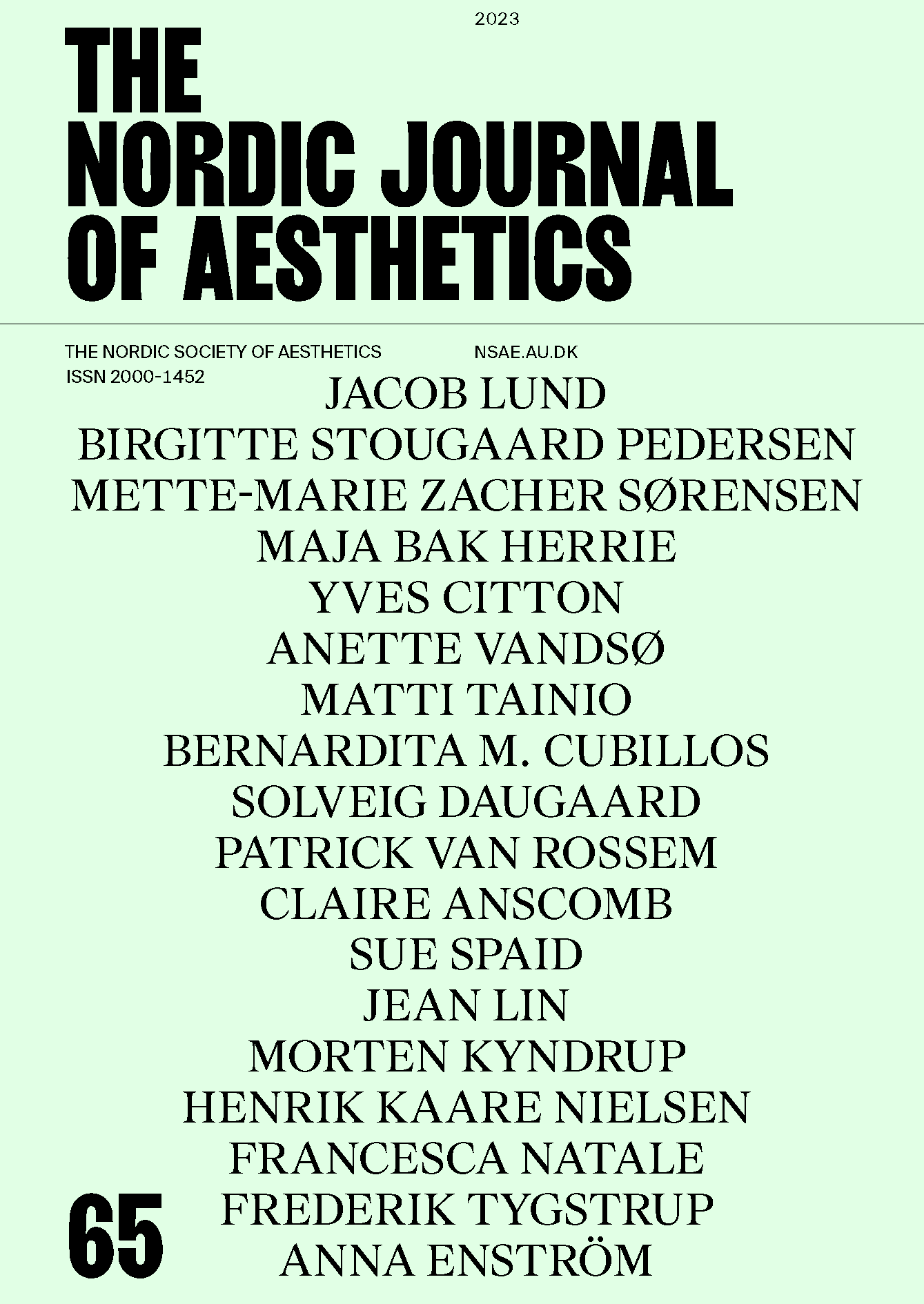Multiple Identities of Borderline Cases in Art
DOI:
https://doi.org/10.7146/nja.v32i65-66.140110Keywords:
Borderline of Art, Ikebana, Molecular Gastronomy, Non-Western Art, Applied Art, Artistic IdentityAbstract
When the borderline cases of art occur in non-art categories, the debate of artistic status arises not only with regard to the individual cases but also with regard to the category to which they belong. The identity of the individual case tends to be defined in connection to the category it belongs to. It tends to formulate that, if the individual case is art, then the entire category is also art, and if the category is not art, then the individual case is also not art. Such a view inevitably hampers the artistic status of works arising from the non-art categories. This article argues that the individual cases and their belonging categories need not be strictly interlocking and that they could possess multiple identities depending on the context that they are present. Thus the point shifts from whether the case is or is not art in its absolute sense to ‘when’ is it art.
References
Thierry de Duve, “The Story of Fountain: Hard Facts and Soft Speculation,” Nordic Journal of Aesthetics 57–58 (2019): 10–47. DOI: https://doi.
org/10.7146/nja.v28i57-58.114857.
Elizabeth Telfer, Food for Thought: Philosophy of Food (New York: Routledge, 1996).
Carolyn Korsmeyer, Making Sense of Taste: Food and Philosophy (Ithaca: Cornell University Press, 1999).
Kevin Sweeney, The Aesthetics of Food: The Philosophy Debate About What We Eat and Drink (Lanham: Rowman & Littlefield
International, 2017).
MIZUTANI Takashi三頭谷鷹史, Zen’ei ikebana no jidai : fukuganteki bijutsuron = avant-garde ikebana 前衛いけばなの時代―複眼的美術論 (Tokyo : Bigaku Shuppan 美学出版, 2003).
FURUKAWA Hisashi古川久, “Geido芸道” in Bigakujiten 美学事典, edited by Takeuchi Toshio竹内敏雄, enlarged ed. (Kobundo 弘文堂, 1974).
Jean-Paul Jouary, Ferran Adria and elBulli: The Art, The Philosophy, The Gastronomy (London: Andre Deutsch Ltd, 2013).
Nelson Goodman, “When is Art?,” in Ways of Worldmaking (Brighton: The Harvester Press, 1978).
Downloads
Published
How to Cite
Issue
Section
License
Copyright (c) 2023 Jean Lin

This work is licensed under a Creative Commons Attribution 4.0 International License.
Authors who publish with this journal agree to the following terms:
- Authors retain copyright and grant the journal right of first publication with the work simultaneously licensed under a Creative Commons Attribution License that allows others to share the work with an acknowledgement of the work's authorship and initial publication in this journal.
- Authors are able to enter into separate, additional contractual arrangements for the non-exclusive distribution of the journal's published version of the work (e.g., post it to an institutional repository or publish it in a book), with an acknowledgement of its initial publication in this journal.
- Authors are permitted and encouraged to post their work online (e.g., in institutional repositories or on their website) prior to and during the submission process, as it can lead to productive exchanges, as well as earlier and greater citation of published work (See The Effect of Open Access).




